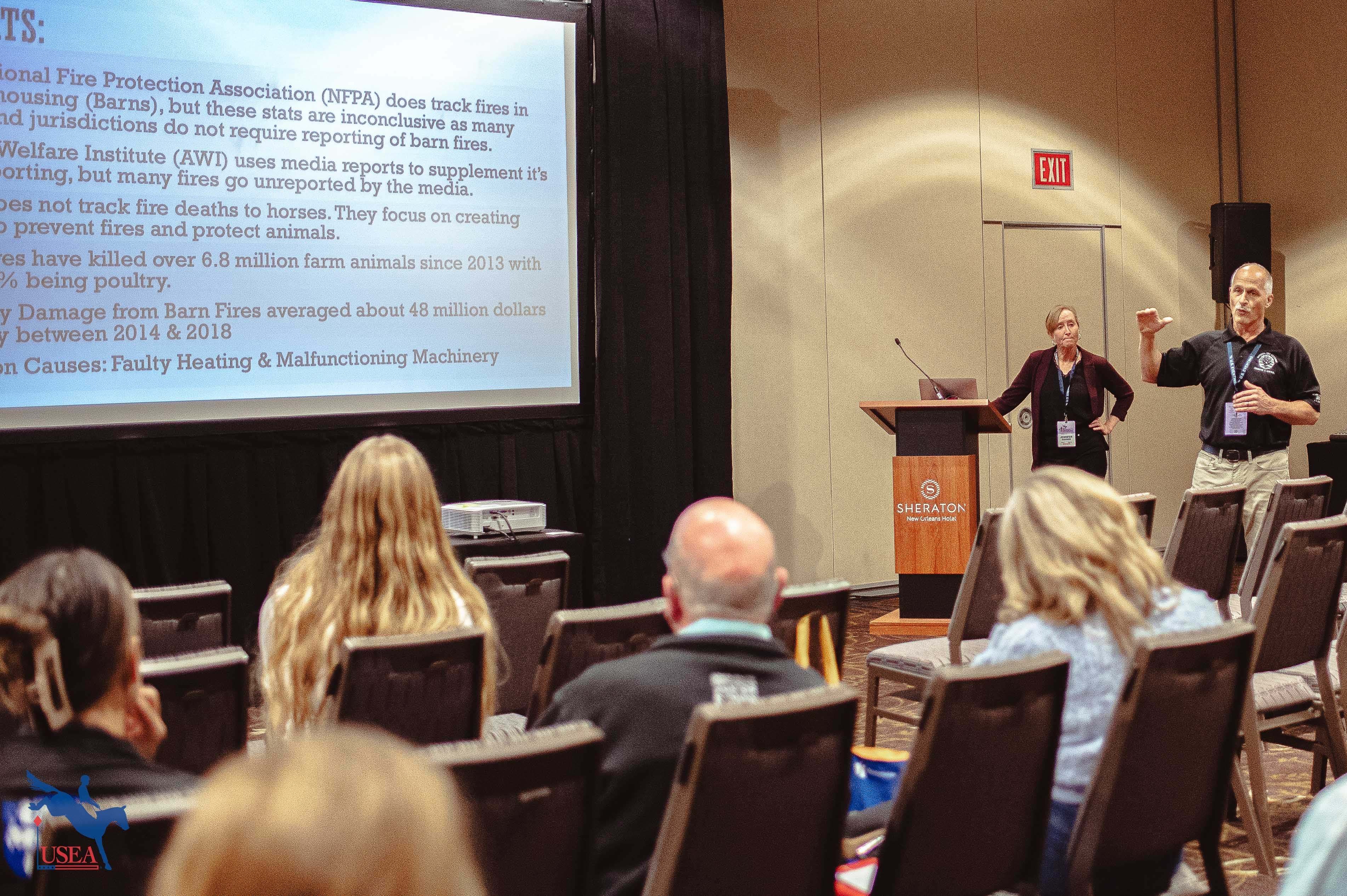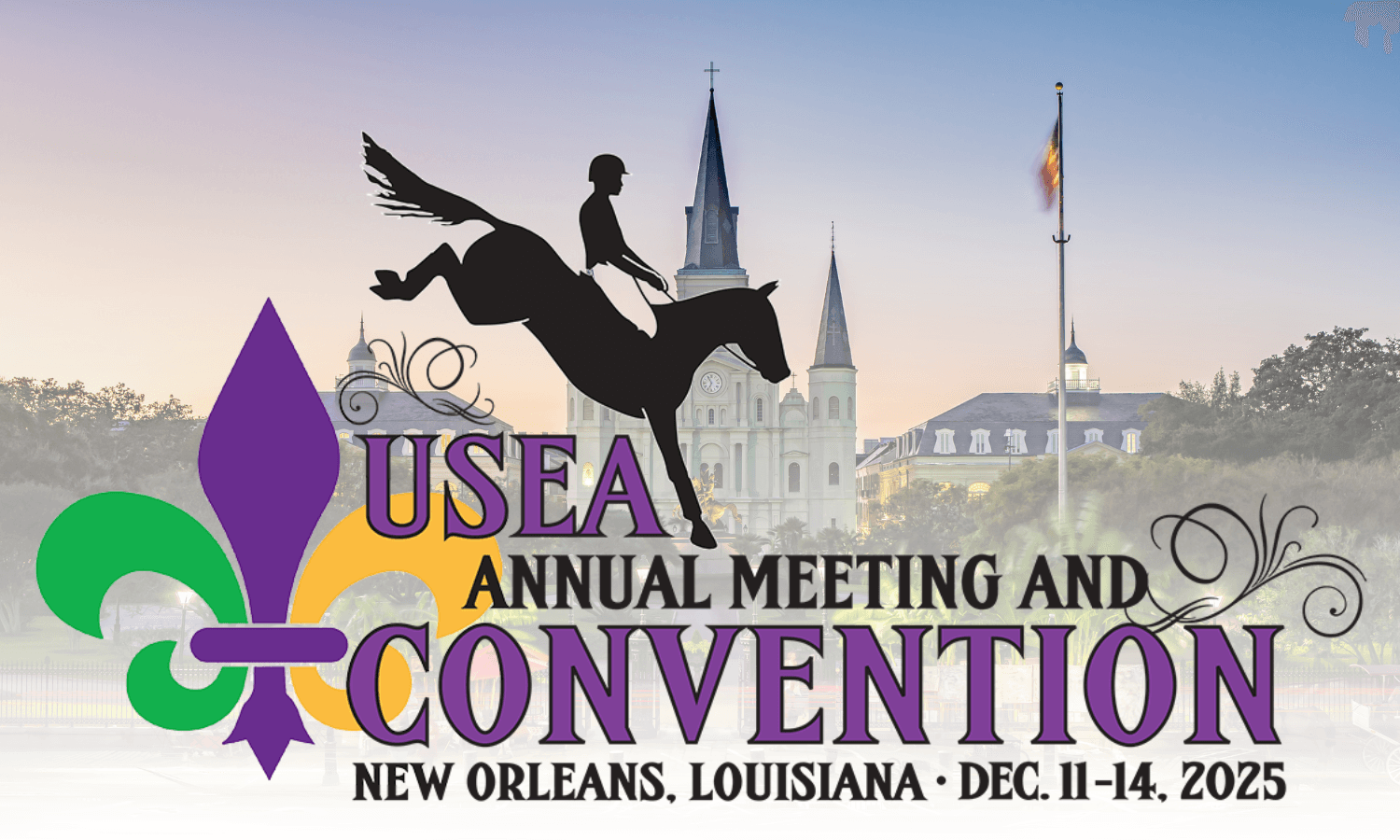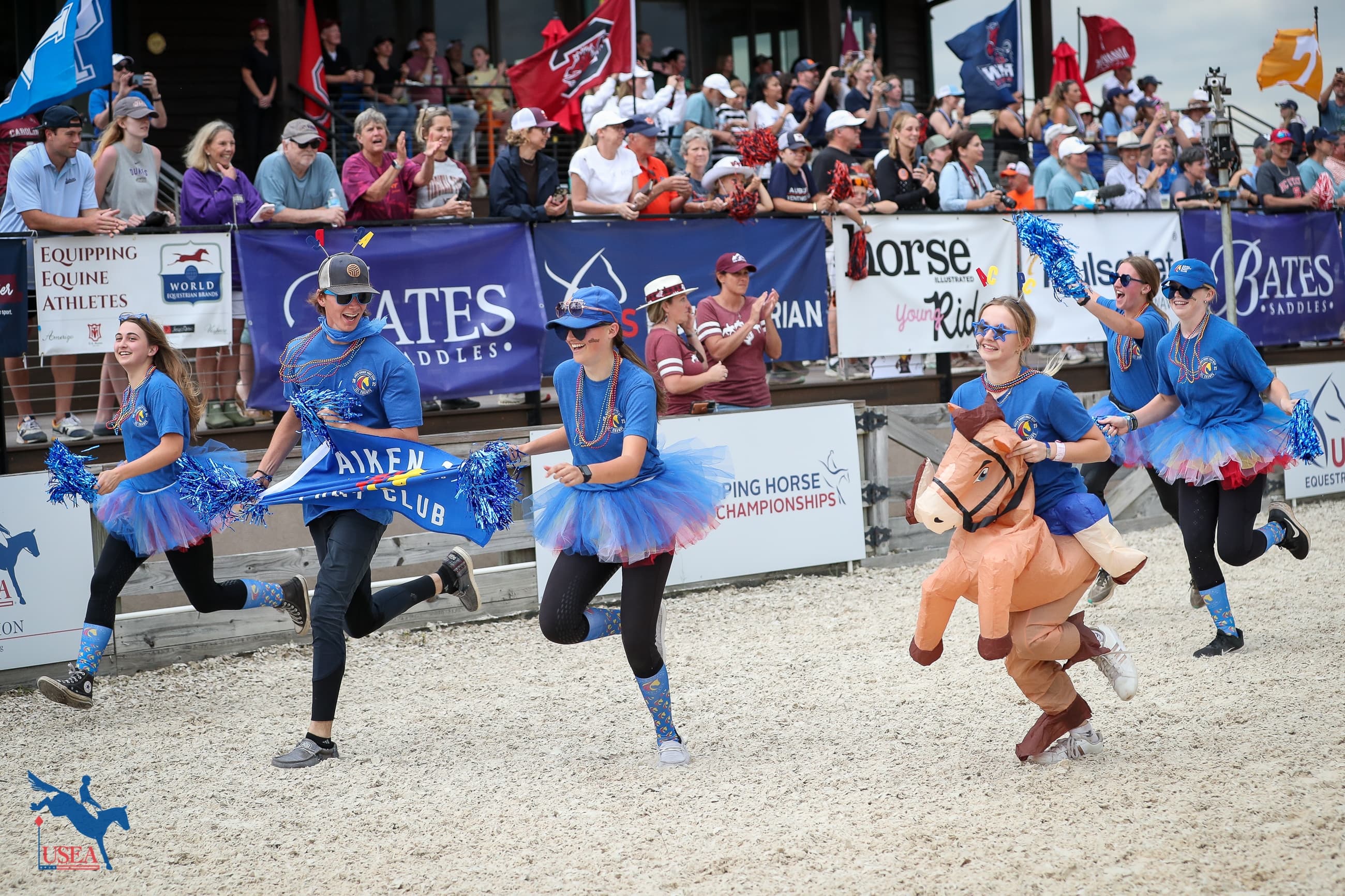Allison Springer: From Pony Club to Changing the Eventing World
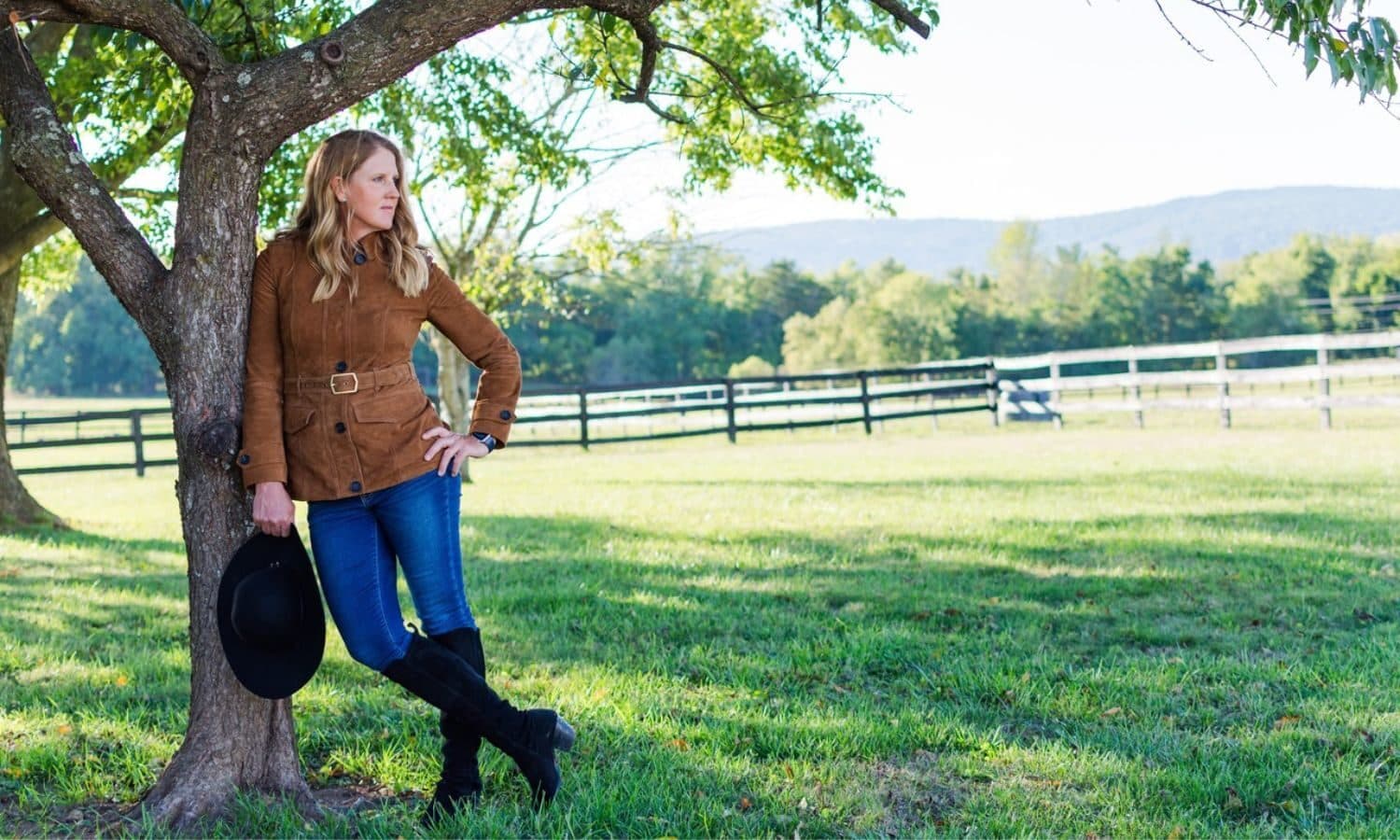
This article originally appeared in the April 2024 issue of Sidelines Magazine.
Bribery can get you far, but for young Allison Springer, it led to a lifetime of horse-crazy pursuits at the highest level of the eventing sport. Raised in the outskirts of Chicago in Barrington, Illinois, Allison and her city-grown parents were enjoying their new life in the country when she had the opportunity to ride a neighbor’s pony one day after school—and, as she describes it, “that’s how the disease begins for a little girl.”
Allison was still sucking her thumb in kindergarten, and in order to negotiate her quitting, her father offered her a bribe: “You can have one thing, whatever you want, as long as you quit, but you have to completely quit today.” Allison faithfully recalled, “I wanted a pony. I still remember his eyes to this day, but I never cheated! We bought that neighbor’s pony for $25.”
With very little knowledge of the horse world, Allison and her parents admittedly began their equine journey a bit lost. They were eventually introduced to the local Pony Club, where she was able to gain expert direction and guidance that would shape her Junior career. Earning her “A” rating at just 16 years old, as well as her colors in the Fox River Valley Hunt, Allison credits the education she gained in Pony Club for much of the success she later found in her professional career.
In addition to the mounted learning experiences, Allison also greatly emphasized the lessons taught to kids in Pony Club—lessons that shape children not only as riders, but as students and future leaders. “Pony Club just teaches a kid so much responsibility,” she said. “You learn everything about the horses, but you really learn how to do things on your own and do it the right way. Pony Club gave me so much knowledge and foundation, even from an early age—learning how to communicate and teach, and put more thought into what you’re doing and why.”
Pony Club also brought Allison connections she would later utilize as a riding professional. Nancy Winter, a close family friend who is still one of Allison’s biggest supporters, had a daughter who also rode in a neighboring Pony Club when they were both young, and was the Area IV Coordinator for the Young Riders program when Allison was competing. “Nancy started sending her Connemaras to me to train—she’d always remembered me as that kid that was so serious about wrapping my pony's legs correctly,” Allison laughed. “She knew I'd always take care of her ponies and train them and love them just the way I would the competition horses. Those are relationships that began when I was young in Pony Club.”
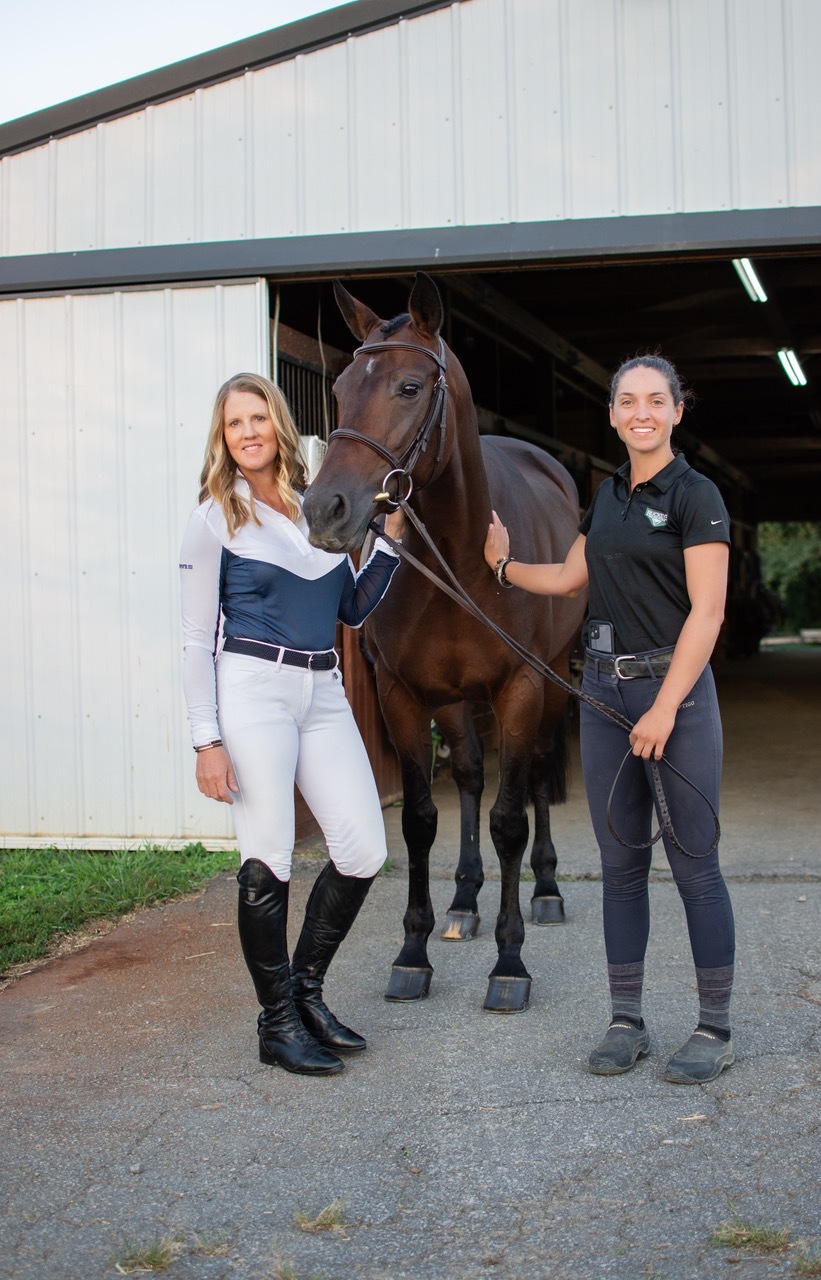
A DIVE INTO EVENTING
At 10 years old, Allison found a new love through her television while watching the Los Angeles Olympics. “Watching the three-day eventing and seeing the horses jump up the waterfalls, I was like, 'Oh my goodness, that's what I'm going to do,’” she recalled. “‘I'm going to go to the Olympics and do that.’ That's where my focus was, and that's when the whole journey started.”
After some rather frightening adventures with Allison’s first big horse, a “nut job” named Brownie, Allison’s mom came across Nancy Roth, a local veterinarian, riding a “tall, lanky saint of a horse” at a competition and instantly decided that she wanted her daughter on something that safe. They ended up leasing that same horse named Bottom Line, also known as Harpoon, from Nancy, who encouraged Allison to go out east to compete with him. After a horseless “gap year” during her freshman year at college, Allison and Harpoon went on to compete at the Advanced level for the first time, as well as compete at the USEF Eventing Young Rider Championships together.
Allison’s university years at Bowdoin College in Maine served to solidify her career path. As a political science major on the government and legal studies track, she began her senior year investigating what her future as an amateur might look like, as her horse at the time was beginning to excel in the upper levels. While trying to figure out how she would balance a career with competing, she began to realize that she wanted something different for her life. “I remember calling my dad and saying, ‘I am young, and I am brave, and I am good at this now. This is my dream and I just really want to go after it,’” Allison recalled. “As long as I could make a business out of it and afford it, he gave me his blessing, so that's what I did.”
Allison embraced the professional rider lifestyle, though not quite as lucrative a field as legal studies, straight out of college. “There was a long period of time where I would gallop racehorses in the morning, do my eventers in the afternoon and then waitress at night,” she explained. “I did everything to afford it.” Working with racehorses eventually brought her to Aiken, South Carolina, where she met the trainer who would one day become her current coach, five-star eventer Phillip Dutton. At the time, Phillip was just starting his program in the U.S. after making the move from Australia. “Eventually, I grew a business, and then it was early 2002 when Karen and David O'Connor offered me a job out at Stonehall Farm,” Allison said. She had trained with the O’Connors periodically throughout her previous competition year, and this move launched her future of establishing a Virginian home base.
“I was still a fly-by-the-seat-of-the-pants sort of Midwest girl, but when I made it out to Virginia, there was a lot more structure and really good instruction,” Allison said. “The O'Connors had a relationship with the Parellis when I was working with them, so we all had to get certified to Level One. That actually opened my eyes—their system and their training was so great for me. I learned so much from them and their teaching, and that opened my eyes to a whole new world of training horses.”

IT TAKES A VILLAGE
During her time with the O’Connors, Allison acquired a future champion in a young, spooky prospect named Arthur. After a long and rocky road together, Allison and Arthur saw their first big win at the Red Hills Horse Trials in Tallahassee, Florida. “Arthur was really difficult in show jumping. He was a tough horse,” Allison recalled. She had begun working with trainer Katie Prudent, who would prove vital in overcoming several of Allison’s mental struggles with the difficult gelding. “It's really hard to compete on the top stage, even on any stage. Katie is very direct, but she's very encouraging, and she just knew what I needed individually.”
When Arthur and Allison were bound for Red Hills in 2011, Katie told Allison to call her when the event was over to let her know how they had done. As Allison walked away, Katie called out again, “‘Allison! Don't call me unless you win! You're prepared. You better call me.’ She smiled at me, and it was kind of like, ‘You are ready. You don't have to be second bill.’ I knew in the way she said it that I had to go and do this.”
Winning the CIC3* less than a point ahead of Boyd Martin and Neville Bardos, Allison gained a strong sense of clarity in regard to her future. “It was my first big win that I really wanted and maintained a great level of focus for, and I was like, ‘OK, I can do this. I can play on the stage with the best of them now.’” After her stellar victory at Red Hills and having served with Arthur as U.S. Team alternates the year prior for the World Equestrian Games in Lexington, Kentucky, Allison’s top-10 completions at Burghley and the Rolex Kentucky Three-Day Event in 2012 also qualified her to win third place in the 2012/2013 HSBC FEI Classics’ Awards, coming in just behind world champions William Fox-Pitt and Andrew Nicholson.
While Allison achieved huge successes with Arthur, she emphasizes that huge heartbreaks also came hand-in-hand, and it was learning how to cope with the challenges that brought her the greatest growth. “It’s not always roses,” she stressed. “It's not always easy, and you have to be resilient; you have to be willing to learn from the hard times and move forward.” Allison’s village of a support team was instrumental to this mindset. “For all the joy they bring and all the successes, they're horses, and they get stuck in a fence rolling out in a field, and things go wrong. It's just life lessons; how do you cope, who are the people around you, and how do you move forward?”

SAFETY AS WE KNOW IT
During high school, Allison tragically lost her only brother due to head trauma in a fatal car accident. Later, she also watched one of her best friends struggle through rehabilitation after a traumatic accident while riding that inflicted brain injury with severe deficits. Shortly after upper-level rider Courtney King began her public battle with brain injury after her riding accident, these life-changing events were all fresh in Allison’s mind as she sat watching the dressage test rides for the 2010 World Equestrian Games, which were taking place right before the start of the Rolex Kentucky Three-Day Event.
“The dressage riders were making a big point to warm up in their approved helmets, and then they would switch into their top hats and go in the ring,” Allison said. “I've been sponsored by Haygain for a long time, and Clint Joyner was there at Kentucky, so we were talking and I made the comment, ‘Gosh, they kind of look better in their helmets.’ He asked, ‘Why don't they wear a helmet?’ and I responded, ‘Well, the only reason is because nobody else is doing it.’ He looked at me and said, ‘That seems like a funny reason.’ I said, ‘It does, doesn’t it?’”
For Christmas a few years prior to this event, Allison’s mom had asked if she could buy her a helmet, saying, “Tell me what the prettiest, most comfortable helmet is. I don't care how expensive.” Allison had initially replied that she did have helmets, but then realized, “It just clicked in my head: I'm such a jerk. If she loses her last living child to a head injury, how selfish and wrong is that?”
Remembering her mother and deciding that convention was not reason enough, Allison went straight to the Charles Owen booth on the grounds, where she met Roy Burek for the first time. She approached him and said, “Hi, I'm Allison, and I think I'm gonna wear a helmet tomorrow. I have my old Charles Owen, but I have a navy hunt coat—is there any way you have a helmet that would look better with my shadbelly that I could borrow for tomorrow?” Roy answered with a resounding, “Yes, of course we will find you something.”
Allison’s dressage ride the next day marked the first time an eventer wore a helmet for dressage in international competition, changing the history of safety in the sport as we know it. Allison has remained a strong advocate for safety, including serving several years on the Board of Governors and various safety committees, as well as helping to found what is now the Event Riders Association in North America. “We do big, crazy things on cross-country, but a lot of the accidents are just simple things happening to and from the ring on the same safe horse that you ride every day,” she explained. “It's just weird, little things that happen, so there's no reason not to wear a helmet.”
In addition to safety equipment, Allison also advocates for change in the lower levels of the sport, pushing for the allowance of authorized assistance such as is seen in the hunter and jumper sports. “I know that goes against a lot of what people think eventing is—it's such an independent sport, you do it on your own—but I want more people to enjoy this fabulous sport,” she said. “It's more of an educational learning experience at the lower levels. The riders are so desperately nervous going into the start box, and of course the animal picks up on that and they're nervous all of a sudden, and it's just a spiral.”
Allison feels very strongly about making the sport as welcoming and safe as it can be, and she believes that this change must start in the lower levels. Allowing for coach assistance and creating improved safety in show-jump warmups at competitions are just two of the many changes she hopes to see implemented in her efforts to make eventing a more inviting and educational sport.
These days, Allison spends most of her days training, teaching and working on getting her brand new farm up and running. She and her boyfriend of seven years bought their first farm together in Millwood, Virginia, where her horses will finally move in upon their return from Allison’s annual winter training in Aiken. Just minutes outside of the eventing hub of Upperville, the farm has kept Allison busy her last few years of property ownership with non-stop preparations on a newly built arena, refurbishing the beautiful brick structures and setting up the housing for both Allison’s students as well as her parents.
Their new adventure hasn’t been easy, but Allison is elated to finally call their new farm home and start making some changes in her business. “I’m still competing and want to compete at the highest levels. I'll always teach lessons and clinics, but it'd just be nice to find a different blend of business that can allow me more time to focus on what I want to do: competing and training,” she said of her future plans, which include beginning a horse retirement business to create other potential income opportunities on her new, expansive property. “I'm looking to the future—how I can change and have more time to live life a little.”

